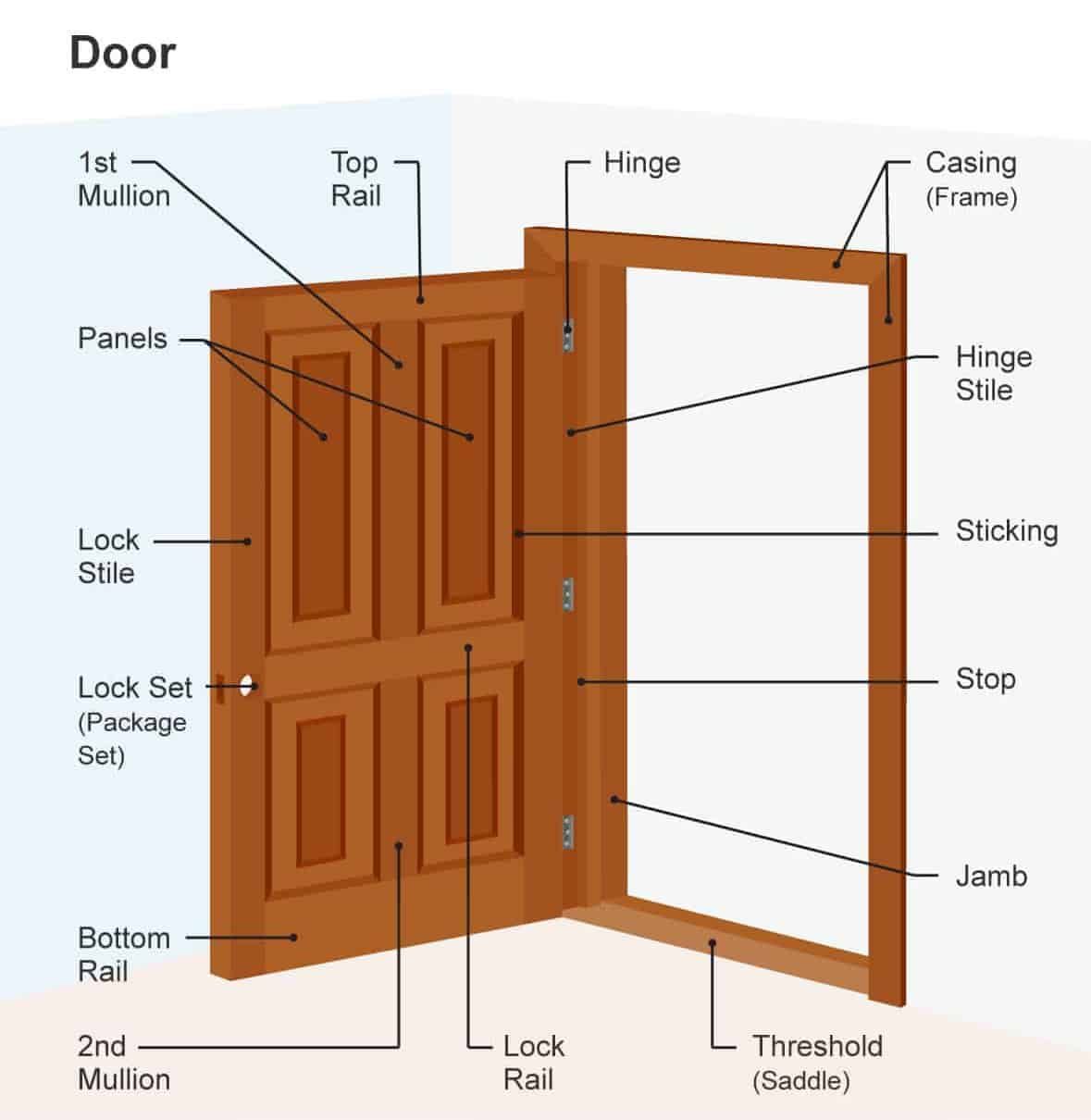Have you ever wondered what makes a massive educational system like JAMB tick? It's really quite something to think about, the way it all comes together. We're talking about the Joint Admissions and Matriculation Board, a very important body for many students here in Nigeria, and its core operations. Understanding the underlying structure, what we might call its "jamb architecture," helps us appreciate how millions of candidates get to pursue their dreams of higher education, you know.
This isn't about physical buildings or door frames, no, it's about the invisible framework that supports everything. It's about the digital systems, the processes, and the safeguards that make sure everything runs smoothly, more or less. When you think about how many people use the JAMB portal every year, it's pretty clear that a strong, well-thought-out system is absolutely necessary.
So, today, we're going to take a closer look at what goes into building and maintaining such a crucial national platform. We'll explore the various parts that make up the JAMB system, how they fit together, and why certain aspects, like security, are so incredibly important for everyone involved. It's almost like peering behind the curtain, you could say.
Table of Contents
- Understanding Jamb Architecture: The Core System
- The JAMB Portal: A Digital Hub
- Securing the System: New Features
- The Importance of a Solid System
- Frequently Asked Questions
- Looking Ahead for JAMB
Understanding Jamb Architecture: The Core System
When we talk about "jamb architecture" in the context of the Joint Admissions and Matriculation Board, we're really talking about the overall design and structure of its information technology systems. This includes all the different pieces of software, the computer networks, the databases, and even the rules that guide how everything works together. It's like the blueprint for a very large, very busy digital machine, you know.
This system handles putting on the Unified Tertiary Matriculation Examination (UTME), which is a huge job in itself. It also manages all the steps that happen before and after the exam, like student registration and getting results out. So, it's not just one single program; it's a whole collection of interconnected parts, each doing its own specific work, but all contributing to the bigger picture, in a way.
The goal of this architecture is to make sure that everything runs smoothly and fairly for every single candidate. This means making sure the system is always available, that it can handle many people trying to use it at the same time, and that all the information is kept safe and accurate. It's a pretty big deal, actually, considering the number of young people who rely on it each year.
At its heart, the jamb architecture is designed to support the board's main work: giving out admissions to higher learning places. This involves collecting lots of data, processing it quickly, and then making sure the right information gets to the right people. It's a complex dance of data and processes, you could say, all happening behind the scenes.
The JAMB Portal: A Digital Hub
A really central part of the JAMB system's architecture is its online portal. This portal is the main place where candidates interact with the board for almost everything they need to do. It's a kind of digital meeting point, you know, where students can take care of many important tasks related to their exams and admissions. It's very much the public face of the entire operation.
The portal is built to be user-friendly, or at least that's the aim, so that millions of young people can access it without too much trouble. It's where the journey for many aspiring university students truly begins and continues through various stages. This means the underlying system has to be incredibly robust, able to handle massive amounts of traffic, especially during peak times like registration or result releases. That's quite a challenge, to be honest.
Think of the portal as a series of connected rooms, each serving a different purpose. From signing up for the exam to checking your scores and even making changes to your details, it's all managed through this single online spot. This kind of unified access is a key part of the architecture, making things more straightforward for the candidates, which is good, you know.
The portal also serves as a communication channel, giving out important announcements and updates. It's designed to be a one-stop shop, so candidates don't have to go looking in many different places for the information they need. This focus on centralized access is a really important part of how the whole system is put together, more or less.
Registration and Application Flow
One of the first and most important things candidates do through the JAMB portal is register for the UTME exam. This process involves collecting personal details, academic history, and choosing preferred institutions and courses. The system has to guide each person through these steps very carefully, making sure all the required information is provided correctly, which is sometimes tricky.
The architecture here supports a structured flow, making sure that one step is completed before the next can begin. For instance, a candidate might need to create an account, then get a profile code, and then proceed to make a payment before they can actually fill out the main application form. This sequence is built into the system's design, you see.
The system also has to handle the payment part, which is pretty significant. Candidates need to pay a fee, like the ₦3,500 mentioned, to complete their registration. The portal needs to connect with various payment systems to make this happen smoothly and securely. This integration with financial services is a vital piece of the overall jamb architecture, allowing for transactional processes to occur.
Once all the information is gathered and the payment is confirmed, the system processes the application and generates a registration number. This entire flow needs to be efficient and reliable, especially given the sheer volume of applications that come in during registration periods. It's a big test of the system's capacity, you could say.
Checking Results and Admission Status
After candidates have taken their exams, a really exciting, or maybe a little nerve-wracking, time comes: checking results. The JAMB portal is where the results of the Unified Tertiary Matriculation Examination are released, like the recent 2025 UTME results for all courses. This means the system needs to be able to handle a huge rush of people all trying to get their scores at the same moment, which is a massive demand on its resources.
The architecture behind this involves powerful servers and databases that can store millions of individual results and deliver them quickly upon request. When a candidate logs in to check their scores, the system has to find their specific record and display it without delay. This speed and accuracy are absolutely essential for a good user experience, so it's a big focus.
Beyond just the scores, the portal also helps candidates keep track of their admission status. This means it connects with the Central Admissions Processing System (CAPS), which is another part of the overall JAMB ecosystem. This connection allows candidates to see if they've been offered admission to their chosen institution and course, which is a very important moment for them.
The ability to print result slips is also a feature provided by the portal. This means the system needs to be able to generate personalized documents on demand, which is a pretty handy function. All these result-related services show how the jamb architecture is built to support the entire post-examination journey for students, which is quite comprehensive.
Making Corrections and Updates
Life happens, and sometimes, candidates might need to make changes to their submitted details. The JAMB portal's architecture also includes services for corrections and updates, which is very helpful. For example, candidates can apply for corrections to their names, date of birth, state or local government, and even their gender. This flexibility is built into the system, you know.
These correction services are typically paid services, as mentioned, costing something like ₦3,500. This means the system has to process another payment, link it to the candidate's account, and then allow them to make the necessary changes. The architecture ensures that these changes are accurately recorded and updated across all relevant parts of their profile, which is quite important for official records.
The system also handles requests for "condonement of illegitimate" activities, which suggests a mechanism for addressing certain issues or discrepancies that might come up. This shows that the jamb architecture isn't just about straightforward processes; it also has provisions for handling more unusual situations or corrections, which is a sign of a well-rounded system.
Allowing these kinds of updates helps make sure that candidate information is as accurate as possible, which is truly important for admissions and record-keeping. It shows a commitment to helping candidates fix honest mistakes, which is a pretty good thing for everyone involved, to be honest.
Securing the System: New Features
Security is a really big deal for any system that handles sensitive personal information and critical processes, and the jamb architecture is no different. The board is constantly working to make sure that its systems, especially CAPS, stay secure. They've been putting in place some new security features to protect candidate accounts, which is absolutely vital, considering the value of the information stored.
Think about it: millions of personal details, exam results, and admission statuses are all sitting within this system. Protecting that data from unauthorized access or tampering is a top priority. A breach could have very serious consequences for individual candidates and for the integrity of the entire examination process, so it's taken very seriously, you know.
These new security features are designed to keep accounts safe. While the specific details aren't always public for obvious reasons, they typically involve things like stronger password requirements, perhaps multi-factor authentication, and systems that watch out for unusual activity. These layers of protection are a core part of the system's design, or its architecture, if you will.
The effort to keep the system secure is an ongoing one. Threats are always changing, so the security measures within the jamb architecture need to be updated regularly to stay effective. This commitment to continuous improvement in security helps build trust among candidates and their families, which is truly invaluable for a national body, you know.
The Importance of a Solid System
The very design and strength of the jamb architecture directly affect millions of lives each year. A well-built system means that candidates can register without too much trouble, get their results on time, and have confidence that their applications are handled fairly. It's about making sure that the path to higher education is as smooth as possible for everyone, which is a big task.
When the system works well, it reduces stress for students and parents, and it allows the board to do its work efficiently. This efficiency is very important for managing such a large-scale operation, allowing them to process huge numbers of applications and results quickly and accurately. It saves time and resources for everyone involved, you see.
A solid architecture also means the system is reliable. It can handle peak loads without crashing or slowing down too much, and it can recover quickly if there are any issues. This kind of dependability is absolutely necessary for an examination body that operates on a national scale, where downtime can cause widespread problems, so it's a huge consideration.
Ultimately, the quality of the jamb architecture reflects the board's commitment to fairness and transparency. By providing a secure, accessible, and efficient platform, JAMB helps ensure that every candidate has a fair chance to pursue their academic goals. It's a pretty big responsibility, and the system's design plays a major part in meeting it, you know.
To learn more about how large-scale educational systems are changing, you might want to look at articles on digital transformation in education. You can also learn more about on our site, and link to this page for related information.
Frequently Asked Questions
People often have questions about how the JAMB system works, especially given how many people use it. Here are some common things people ask, which sheds a little more light on the jamb architecture.
How does the JAMB portal manage so many users at once?
The JAMB portal handles a huge number of users by having a really robust underlying system, you know. This means it uses powerful servers and smart software that can share the work among many different parts. It's built to scale up, so when millions of candidates try to log in at the same time, the system can spread that load out, preventing it from getting overwhelmed. It's kind of like having many checkout counters open at a very busy store, so no one has to wait too long, more or less.
What kind of security protects my JAMB account information?
Protecting your JAMB account information is a big deal, and the board has been putting in new security features to keep everything safe. While the exact details are kept private to make them more effective, these often include things like strong encryption for your data, systems that watch for unusual login attempts, and ways to make sure only you can get into your account. It's about putting multiple layers of protection in place, very much like locking up your valuables in a strong safe with several different locks, you know.
Can I make changes to my JAMB details after registration?
Yes, you can actually make changes to your JAMB details after you've registered. The JAMB portal offers services for corrections, so if you need to fix your name, date of birth, state, local government, or even your gender, you can apply for those changes. There's usually a small fee for these services, like the ₦3,500 mentioned. This flexibility is part of the system's design, allowing candidates to keep their records accurate, which is quite helpful, you know.
Looking Ahead for JAMB
The jamb architecture is not a finished thing; it's always growing and changing. As technology moves forward and the needs of students and institutions change, the system needs to adapt, too. This means continuous updates, improvements, and perhaps even adding new services to make the whole process even better for everyone involved. It's a constant effort to stay current and effective, you know, especially with the 2025 UTME results already out, showing the system is always in motion.
The goal is always to make the system more efficient, more secure, and easier for candidates to use. This ongoing development shows a commitment to serving the educational aspirations of the nation's youth. It's a pretty big job, making sure millions of dreams have a clear path forward, and the underlying system is a huge part of making that happen, you could say.



